
WHILE it’s important to keep the outside of a car clean, the inside is just as important. After all, it’s where we spend most of our motoring time and in many ways the interior of a car constitutes a more challenging environment than the exterior.
First, we raise the windows to seal it up nice and tight and then park it in the blazing Australian summer sun where the accumulated heat becomes intense enough to kill you. Then, as a consequence of the heat, when we get back into the car we sweat all over the upholstery. Even on cooler days we still shed biological material like dead skin and hair. Humans are pretty disgusting creatures.
We also bring dirt from the outside environment into our cars whenever we get into them. Cleaning is all about removing those containments, rectifying the consequences of them and trying to prevent them from having the same effect in the future.

LEATHER
Leather is still seen as the premier covering for top quality seats, however all is not as it seems. Natural cow hides are extremely thick and very stiff. Most of the leather we see consists of thinner sheets that have been slit from the original hides. Because of this, none but the original top layer has a grain pattern. This has to be pressed back into the spilt hides to make it look like leather.
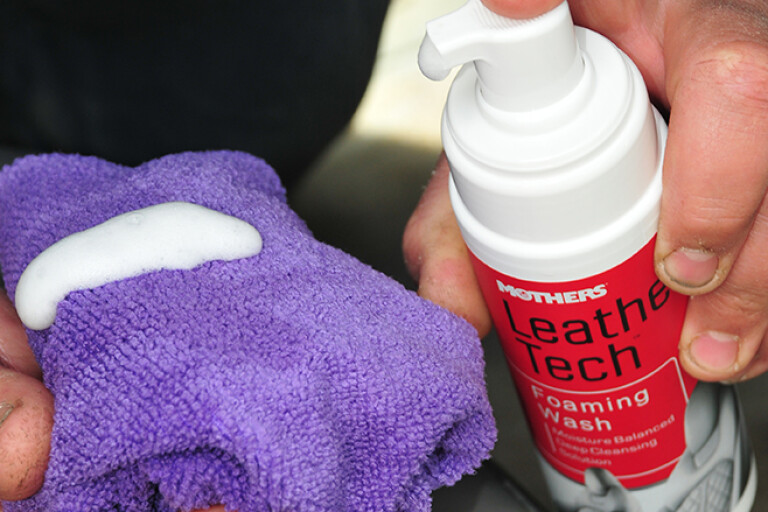
These thinner sheets can be fragile and need a good deal more treatment before they’re suitable for the harsh environment of a car. Some leathers, particularly those of recent decades, are coated with a layer of vinyl or polyurethane. How do you tell? Dan Bowden explains that if a drop of water on a seat sinks in and leaves a stain (that eventually disappears without damage) you have uncoated leather. If the water beads on the surface, the leather is coated. Also, if scratching it a little with a fingernail changes its colour, it’s likely un-coated leather but most leather these days is coated.
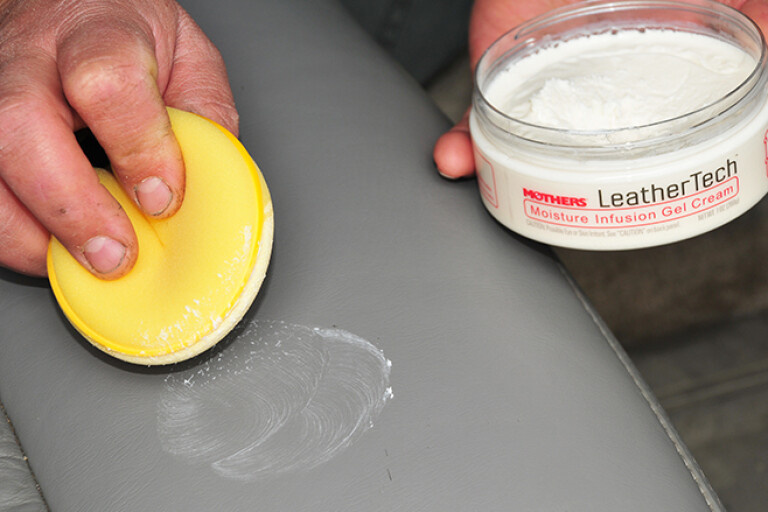
So, leather is not necessarily as natural as generally thought. Consequently, it needs very specific care quite different from that suited to the earlier, uncoated automotive leathers of yesteryear. Many of the oils used to protect older, uncoated leathers don’t penetrate the surface coatings of newer leathers. What’s more, they can damage the coatings on more recent leathers. It’s best to use a product specifically formulated for modern leather, like the ones shown here.

VINYL & RUBBER
It's not only leather that’s undergone a great deal of change over the decades, so has its ubiquitous substitute, vinyl. Vinyl-skinned dashes are evidence of how different modern vinyls are compared with older types. Old dashes crack and warp whereas this problem seems to have been all but eliminated in more recent cars. Vinyl formulations can be altered to achieve a variety of characteristics. In fact, modern automotive vinyls are so good that it’s often difficult to tell them apart from leather without examining the reverse side.

Automotive upholstery vinyl is made to resist the detrimental effects of movement from the occupants. Importantly, it’s also designed to resist the effects of human sweat. Further, it’s formulated specifically to be softer than, say, marine vinyl. Why would anyone use marine-grade vinyl in a car? Mainly because this vinyl is available in more colours and textures than automotive-grade vinyl and it’s sometimes used to match paint.
Automotive vinyl isn’t terribly difficult to care for. The main thing is to avoid cleaners that contain silicon and solvent. These leave a finish that’s very shiny and which actually attracts dust. Cleaners that are good for vinyl are also often suited to cleaning your rubber seals.
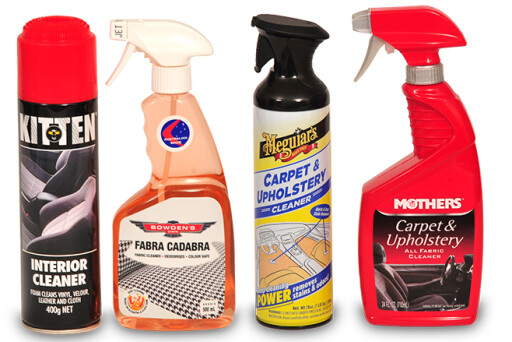 Polyester-based and other fabrics need their own formulations
Polyester-based and other fabrics need their own formulations
CLOTH/VELOUR
Around 90 percent of fabrics used in automotive seat trimming are polyesters. This material is popular in car seats because it has high resistance to abrasion coupled with excellent resistance to the effects of sunlight. It’s fairly resistant to stains because of treatments applied to the fibres during manufacture but it is particularly susceptible to oil-based stains.
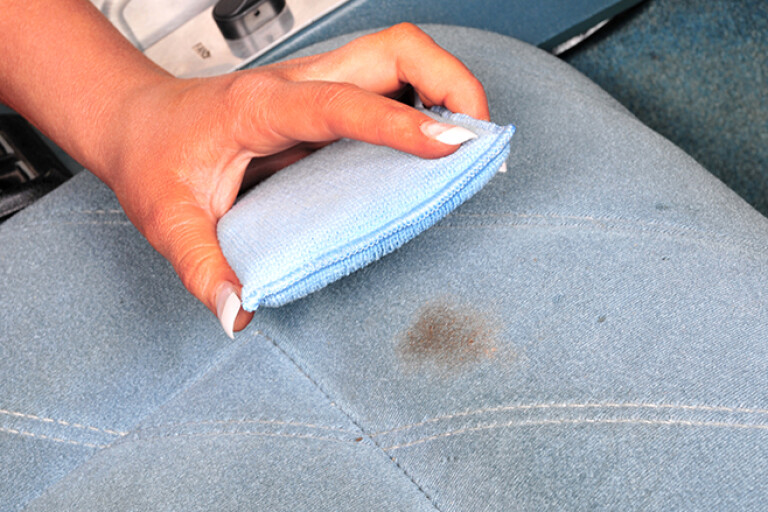
As with virtually all automotive fabrics and finishes, care and the right products are needed to clean polyester fabrics properly. Again, the main manufacturers of cleaning agents have formulated specific products that work very well according to what we’ve seen. Note the effectiveness with which the stain in the application photographs was removed from the considerably aged original velour seats. Because carpets are essentially another form of fabric, they’re treated in pretty much the same way as upholstery fabrics and many of the products available are described as suitable for both applications.
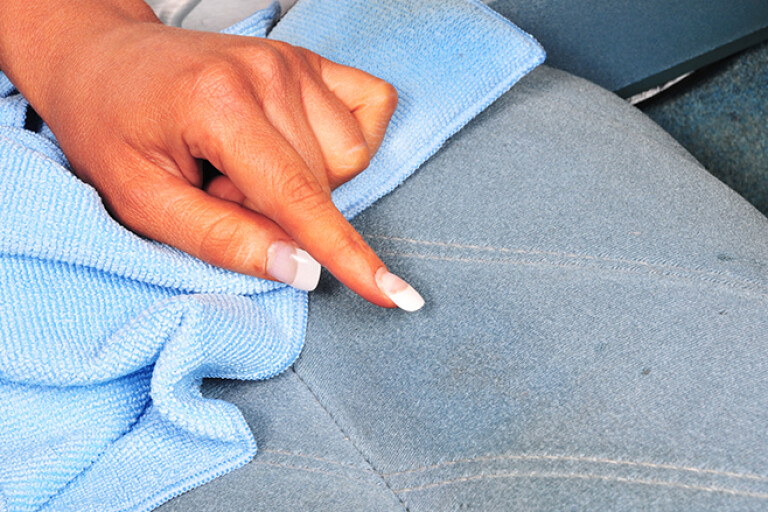
MICROFIBRE CLOTHS
Like automotive cloth trimming materials, microfibre cloths are made from polyesters. Because they consist of synthetic fibres they don’t leave lint, which is one of their main advantages over ordinary cleaning rags. Even more importantly, though, is the fact that microfibres can be engineered to have specific characteristics. The fibres in microfibre cleaning cloths are described as split because they have tiny longitudinal grooves formed in them during manufacture. These grooves and the very small size of the microfibres make such cloths highly absorbent. They also increase cleaning power by grabbing and holding dust.
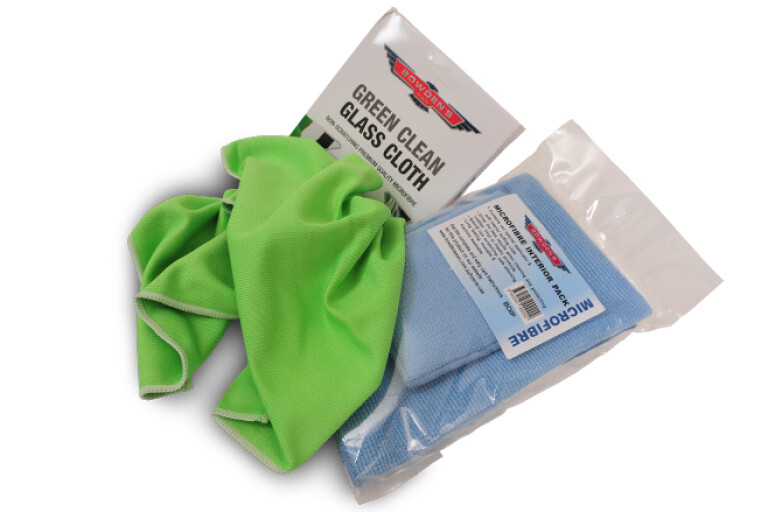
Not all microfibres are split but those intended for automotive cleaning are. All of the cloths available from the specialist manufactures represented here are made of split fibres, even though they aren’t described as such. It’s easy to tell by simply dragging one across the palm of your hand. If it’s grippy and feels sort of coarse, it’s made of split microfibres. The feeling is caused by the grooves grabbing on the tiny imperfections of your palm. Also, if you pour a beaded puddle of water onto a smooth surface and push the cloth into it the water is more readily absorbed rather than pushed along the surface. You can push the cloth into the water faster than you can with a non-microfibre cloth.
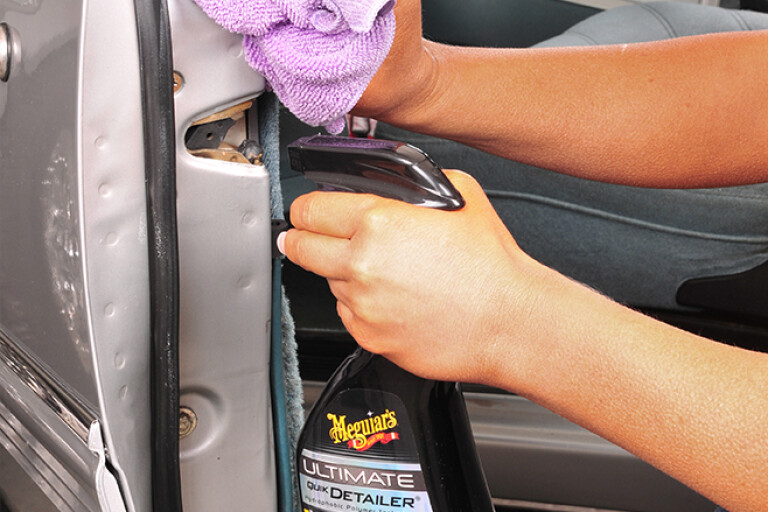
Ironically, the dust holding power of split microfibre cloths can cause abrasive damage, so it’s important to make sure they’re kept clean. This isn’t difficult as they’re machine washable. Warm, rather than scalding hot, washes using liquid detergents are best but make sure there is no fabric conditioner or bleach in the product used. A good pre-soak and hand washing is the method we favour. Wash the cloths for particular purposes separately. Don’t mix polishing cloths with general wash cloths etc. Dan Bowden warns that if microfibre cloths are drip dried it should be in an area that isn’t going to pick up dust. A windy day outside might dry sheets nicely but it’s not a good way to dry microfibre cloths.
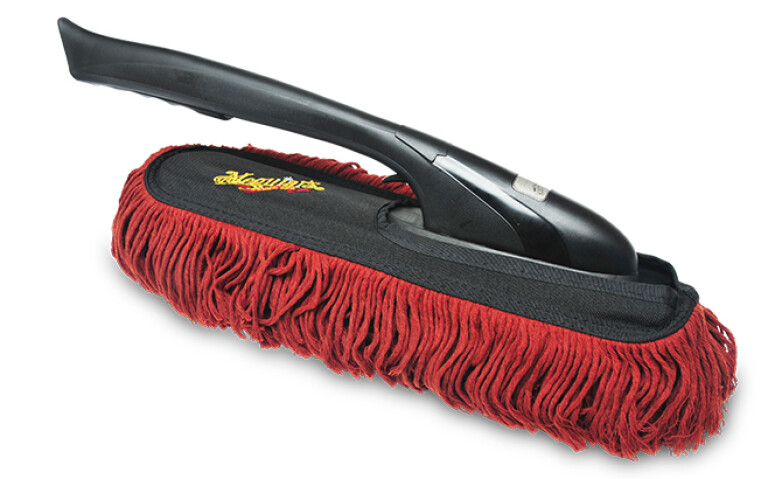
THE BRUSH OFF
Brushes are the foundation of interior cleaning and Mothers in particular offers a good range specifically suited to various automotive cleaning processes. General brushes can also be used and ordinary paint brushes in small sizes can make good dust removers. Very small artists’ brushes can get into tight places and the handles can be used to poke cleaning cloths into corners and places like vent louvres.
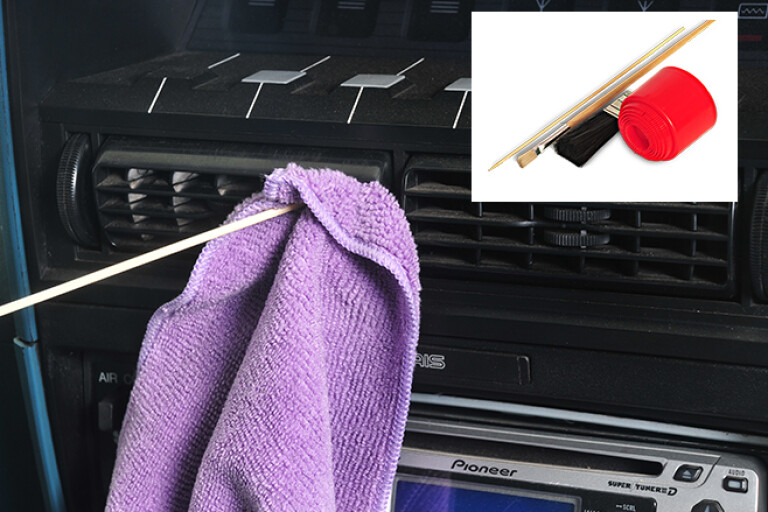
Brushing should always be the first step in cleaning. It loosens and dislodges dirt making it easier for subsequent vacuuming to remove it. Seams should be spread apart and brushed out thoroughly. Vacuuming should follow brushing. Hard hose attachments are fine on fabric seats, carpets, roof linings and the like while brush attachments are better for leather and vinyl seats and trims, dash pads, vent openings and the like. After these preliminary steps have removed the larger particles, it’s time for the sorts of specialized products shown.
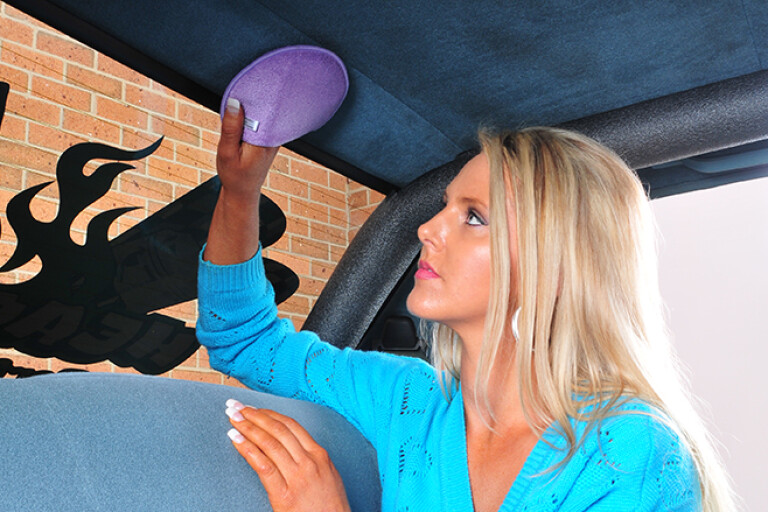
In general, most of these products should be applied to applicators rather than the surfaces to be cleaned and then removed and dried with separate microfibre cloths. As we explained when we covered external cleaning last issue, cloths are colour-coded so that it’s easier to avoid mixing incompatible cleaning products.
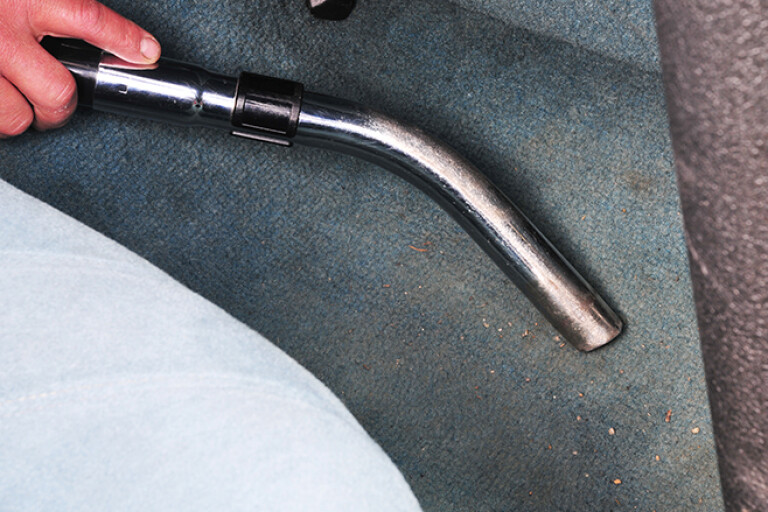
Keep in mind that the longer dirt and stains remain in place the more difficult they will be to remove; get out there and have fun in your car, but never let it sit dirty once you’re home.
THE DONK
The engine bay has a mix of requirements. It’s sort of inside, sort of outside and with far more severe conditions than either because of the heat and direct exposure to road grime and spray when it rains. There can be be oil and grease present too, although if there’s too much you have other problems!
 As far as cleaning is concerned there’s general paint, chrome, aluminium alloys, rubber, plastics, under-bonnet liners, even bits of glass sometimes. Extra care is needed because there are wires and connectors that can be disturbed and vacuum hoses that can be inadvertently knocked off their connection points. All of the products we’ve covered in these two articles are useful in the engine bay for the appropriate surfaces and materials. Of course the one extra thing that’s needed is a good degreaser. These are usually sprayed on and left to soak for a little bit, although not for long because like other cleaning products they shouldn’t be left to dry of their own accord
As far as cleaning is concerned there’s general paint, chrome, aluminium alloys, rubber, plastics, under-bonnet liners, even bits of glass sometimes. Extra care is needed because there are wires and connectors that can be disturbed and vacuum hoses that can be inadvertently knocked off their connection points. All of the products we’ve covered in these two articles are useful in the engine bay for the appropriate surfaces and materials. Of course the one extra thing that’s needed is a good degreaser. These are usually sprayed on and left to soak for a little bit, although not for long because like other cleaning products they shouldn’t be left to dry of their own accord
 A wheel brush like the one Sharon is using (above) is extremely useful for getting into the various tight spots under the bonnet. Brushes are also useful for rejuvenating old wiring and connectors. Here, the loom has been removed from the car. Obviously, this won’t be the case in general cleaning so care is needed to keep water out of electrical connections.
A wheel brush like the one Sharon is using (above) is extremely useful for getting into the various tight spots under the bonnet. Brushes are also useful for rejuvenating old wiring and connectors. Here, the loom has been removed from the car. Obviously, this won’t be the case in general cleaning so care is needed to keep water out of electrical connections.

COMMENTS